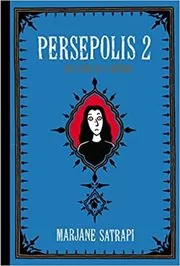Monster Summary
Author: Walter Dean Myers
This page offers our Monster summary (Walter Dean Myers's book). It opens with an overview of the book, and follows with a concise chapter-by-chapter summary.
Drafted with AI assistance and reviewed by a human editor.
As an Amazon Associate, we earn from qualifying purchases (at no extra cost to you).
Overview
A 16-year-old African American boy, Steve Harmon, finds himself facing a murder charge and passes time in his jail cell by writing in a notebook. The charge is a serious one, felony homicide, a crime that could result in a lengthy prison sentence. He decides to craft a screenplay about his experiences, naming it "Monster" - a label the prosecutor has bestowed upon him. His narrative unfolds in a blend of handwritten thoughts and typed scenes.
As his trial begins, Steve's lawyer, Kathy O'Brien, urges him to grasp the gravity of the situation. The State prosecutor, Sandra Petrocelli, is known to be highly competent, and Steve's co-defendant, James King, a fellow young African American, adds complexity to the case. The trial opens with Petrocelli laying out the charges against the defendants - they, along with two other men, are accused of robbing a drugstore and killing its owner, Aguinaldo Nesbitt. Petrocelli labels the defendants as "monsters in the community." Two witnesses, José Delgado and Salvatore Zinzi, testify, but Steve's and King's defense counsels reveal these testimonies were given in exchange for lighter sentences.
The trial progresses, with Petrocelli presenting further witnesses and evidence, and the defense attorneys challenging the validity of the prosecution's evidence. Steve battles fear, anger, and despair as he records prison incidents and reflects on his life. Eventually, Steve takes the stand to maintain his innocence, as does his film teacher who vouches for his character. The final moments of the trial are tense, with both sides delivering compelling closing arguments. The jury finally returns, acquitting Steve and convicting King. Despite the victory, Steve's relationship with his defense lawyer, O'Brien, seems strained, a fact that troubles him deeply. Five months later, he's back home and continues to write and make films - but, the ordeal has left undeniable changes in his life and relationships.
Edited by
Software engineer whose passion for tracking book recommendations from podcasts inspired the creation of MRB.
Lead investor at 3one4 Capital whose startup expertise and love for books helped shaped MRB and its growth.







Comments
Did we miss something? Have feedback?
Help us improve this page by sharing your thoughts